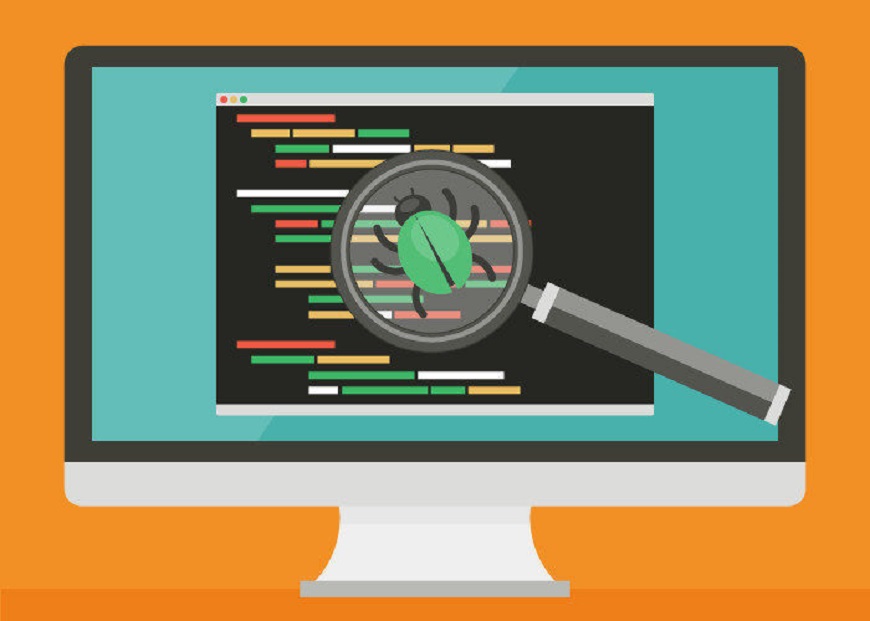Technology
What Are the Uses for a Vulnerability Scanner?

Cyberattacks have become so common that you can expect to see news about a breach every week. Just recently, Twitter experienced a breach that affected high-profile US Twitter accounts. This attack highlights the need for proactive security measures, such as vulnerability scans.
Today’s hyper-connected world calls for extreme vigilance and knowledge of the ever-present threat of cyberattacks. These cyberattacks typically exploit vulnerabilities to breach your networks. What better way to prevent these attacks than to conduct regular vulnerability scans?
What Is a Vulnerability Scanner?
Your network is constantly exposed to threats, and loopholes that could result in catastrophic incidents for your business were threat actors to identify them. Vulnerability scanners simply help identify these threats early enough before threat actors can find them. You can rely on them to scan your system or network for vulnerabilities while comparing the results to pre-established vulnerability databases. Some common vulnerability scanners include ImmuniWeb, Tripwire IP360, Paessler PRTG, and Acunetix.
How to Effectively Use Vulnerability Scanners
For you to effectively use vulnerability scanners, you need to scan your system and network often. The databases that contain recently discovered vulnerabilities tend to be updated often. Ideally, having a team in charge of these scans is ideal.
Once you are done with a scan, the team will assess the ad hoc reports. If they identify an issue with your system, they will suggest a remedy for mitigating the risks involved. Most databases tend to suggest solutions for the vulnerabilities they expose.
Types of Vulnerability Scans
Cyberattackers target flaws or vulnerabilities in networks, systems, and web applications with the sole purpose of exploiting them. For example, when dealing with application vulnerability management, the developers will seek to identify vulnerabilities, such as SQL injection, cross-site scripting, security misconfiguration, failure to restrict URL access, and LDAP injection.
To identify such vulnerabilities, organizations employ different vulnerability scans based on their testing objectives. The most common vulnerability scans include:
- External Vulnerability Scans
External scans aim to identify threats that can arise from outside our network, especially on the externally facing services. They are targeted at external IP addresses and ports.
For instance, they can help you assess new services and servers launched since the last time you conducted a scan and any threats associated with them. Some common threats you can find include having servers configured with deprecated services and unsecured transfer protocols. Ideally, you should perform these scans once each month to avoid over/underdoing them. A good example of these scanners is ImmuniWeb.
- Internal Vulnerability Scans
Cybersecurity threats can originate from anywhere, even from within your network. Don’t focus all of your resources on external threats and forget that disgruntled employees can target your network. You could also have missed a threat that seeped through your defences. This kind of threat could open up your network to attacks.
You need to perform an internal vulnerability scan to identify these threats. It also seeks to identify vulnerabilities such as encryption weaknesses, missing patches, and configuration weaknesses.
Keep in mind that internal scans are more complicated compared to external scans as they seek to assess your internal assets. These assets include everything in your network, such as vulnerable software. An internal scan will focus on your network’s internal components, searching for possible vulnerabilities and any other points of exploitation. A good example of such scanners is the Paessler PRTG.
- Environmental Vulnerability Scans
These scans are specific to certain IT environments, including mobile device-based environments, cloud-based environments, IoT devices, etc. Most of these environments are semi-isolated from the entire organization’s network, but they could wreak havoc to the rest of the network if a breach were to occur. Tripwire IP360 is a good example of such scanners.
For instance, IoT systems tend to be less secure than normal devices since most are designed with security as an afterthought. In turn, most manufacturers work overtime to identify security loopholes before sending out updates to patch these issues. A vulnerability scan will identify unpatched weaknesses in your IoT environment, which can be insightful in protecting your organization.
How Effective Is Vulnerability Scanning?
Vulnerability scanning is effective in identifying vulnerabilities in a network. In fact, 60 per cent of security breaches occur despite there being an existing patch for the ad hoc vulnerability. A scan generates a report of its findings, which you can use to patch the vulnerabilities. However, it’s more effective when combined with other cybersecurity measures, such as penetration testing and vulnerability assessment.
Vulnerability Scan vs. Penetration Test vs. Vulnerability Assessment
These three terms are often used interchangeably, but they don’t have similar meanings. For example, you might ask for a penetration test, but what you really need is a vulnerability assessment. To avoid this confusion, learn to differentiate the three.
What Is a Vulnerability Scan?
A vulnerability scan is run by automated software that tries to identify vulnerabilities in your network or system. It’s a simple process, as explained earlier. It merely identifies the vulnerabilities based on a database of vulnerabilities.
While these scans are important, you shouldn’t rely solely on them. This is because if you run a vulnerability scan and report indicates that your system has no vulnerabilities, it doesn’t necessarily mean that your system is fine. Vulnerability scans play an important role in improving an organization’s security, but they aren’t enough. You need a comprehensive cybersecurity strategy that includes vulnerability assessment and penetration testing.
What Is a Vulnerability Assessment?
A vulnerability scan will identify the weaknesses and flaws in your network, but it doesn’t explain the magnitude of these vulnerabilities. You’ll know your network has vulnerabilities, but you have no idea the extent of the damage that these vulnerabilities can inflict on your business.
To understand the damage that these vulnerabilities can cause, you need to conduct a vulnerability assessment, as it takes into account all the assets in your IT infrastructure.
The first stage of the vulnerability assessment is to match all the assets in your environment with their vulnerabilities. This will include your networks, hardware, software, web applications, etc.
Once you’ve matched assets with their vulnerabilities, you will start evaluating the effects the vulnerabilities can have on your business. This will typically require you to assess the impact a weakness can have and the probability of it occurring.
A vulnerability assessment is considered essential as it gives you an idea of what your system can handle, the threats it’s facing, and the magnitude of the threats.
What Is Penetration Testing?
The primary aim of vulnerability assessments and vulnerability scans is to identify vulnerabilities; in contrast, penetration testing seeks to exploit these vulnerabilities. Penetration tests are typically conducted by third parties several times a year as opposed to vulnerability scans, which are conducted more frequently.
Penetration testing begins by identifying weaknesses such as insecure business processes, vulnerable databases, etc. In the next phase, the penetration tester tries to exploit these vulnerabilities.
All three are important and should be part of your cybersecurity strategy. However, you should prioritize vulnerability assessments to keep up with ever-lurking cyberattackers. In contrast, penetration tests can be performed once or twice a year.
Wrapping It Up
Cyberattackers will always try to breach your security, and their primary target will be vulnerabilities that they can exploit. As long as you’re in a connected world, there is always a risk that your network will be hacked. Hackers will breach even the best defences as long as there is a weak link.
However, you can prevent these attacks by constantly scanning your IT infrastructure for vulnerabilities. Don’t stop there. Conduct a vulnerability assessment to help you identify these vulnerabilities, and rank them according to the degree of damage they can cause. Include penetration testing bi-annually or annually to test how your IT infrastructure would fare against an external attack.
Cyberattackers are constantly poking around your network looking for weaknesses, and if you don’t implement measures to strengthen your cybersecurity, they will eventually find these flaws and exploit them. You don’t need complex security measures; a simple vulnerability scan will act as a good starting point.
Technology
Nigeria, Google in Talks for New Undersea Cable

By Adedapo Adesanya
The Nigerian government is in advanced talks with Google for a new undersea cable to strengthen the country’s digital connectivity and resilience.
The country wants to augment existing undersea links with Europe, said the chief executive of National Information Technology Development Agency (NITDA), Mr Kashifu Inuwa Abdullahi, as per Bloomberg on Tuesday.
Mr Inuwa said this was necessary at this time, calling Nigeria’s current reliance on cables that follow the same path “a single point of failure.”
Google earlier this year said it plans to expand its digital presence significantly in Africa with the development of four new strategic subsea cable connectivity hubs in the north, south, east, and west regions of the continent.
Already, Google is investing $2.1 million to accelerate Nigeria’s artificial intelligence (AI) growth, aiming to create one million digital jobs and bolster the country’s expanding technology economy.
This is aligned with Nigeria’s National AI Strategy, which is expected to play a meaningful role in the nation’s broader digital transformation. Projections indicate that AI could contribute up to $15 billion to Nigeria’s economy by 2030.
The fund will support partnerships with local organisations. To achieve these aims, the funding will support partnerships with local organisations working in digital skills development and cyber security.
The investment further signals global trust in Nigeria’s technology sector and underlines the nation’s role as a leader in Africa’s digital transformation. As new opportunities emerge, Google believes it support is set to help shape Nigeria’s economy and its place on the global technology stage.
Technology
Airtel Africa, SpaceX to Launch Starlink Direct-to-Cell Connectivity

By Modupe Gbadeyanka
An agreement for a satellite-to-mobile service that will benefit millions of people in Africa has been entered into between Airtel Africa Plc and SpaceX.
This service is through the introduction of Starlink Direct-to-Cell satellite connectivity across all the 14 markets of Airtel Africa that serve 174 million customers.
Through this partnership, Airtel Africa customers with compatible smartphones in regions without terrestrial coverage can have network connectivity through Starlink, which is the world’s largest 4G connectivity provider (by geographic reach).
The satellite-to-mobile service will begin in 2026 with data for select applications and text messaging.
This agreement also includes support for Starlink’s first broadband Direct-to-Cell system, with next-generation satellites that will be capable of providing high-speed connectivity to smartphones with 20x improved data speed. The rollout will proceed in line with country-specific regulatory approvals.
Airtel Africa is the first mobile network operator in Africa to offer Starlink Direct-to-Cell service, powered by 650 satellites to provide seamless connectivity to its customers in remote areas.
The partnership reinforces Airtel Africa’s commitment to bridge digital divide and offer seamless connectivity to its customers.
Airtel Africa and Starlink will continue to explore additional collaboration opportunities to further advance digital inclusion across the continent.
“Airtel Africa remains committed to delivering great experience to our customers by improving access to reliable and contiguous mobile connectivity solutions.
“Starlink’s Direct-to-Cell technology complements the terrestrial infrastructure and even reaches areas where deploying terrestrial network solutions are challenging.
“We are very excited about the collaboration with Starlink, which will establish a new standard for service availability across all our 14 markets,” the chief executive of Airtel Africa, Mr Sunil Taldar, said.
Also commenting, the Vice President of Sales for Starlink, Ms Stephanie Bednarek, said, “For the first time, people across Africa will stay connected in remote areas where terrestrial coverage cannot reach, and we’re so thrilled that Starlink Direct-to-Cell can power this life-changing service.
“Through this agreement with Airtel Africa, we’ll also deliver our next-generation technology to offer high-speed broadband connectivity, which will offer faster access to many essential services.”
Technology
Simplify Your Mobile Life with eSIM and Virtual Numbers

Managing phone numbers used to be a constant hassle. Between personal lines, work numbers, online registrations, and international travel, people often juggled multiple SIM cards, devices, or expensive roaming plans just to stay reachable. Today, eSIMs and virtual phone numbers offer a smarter way to handle communication. One device can manage multiple lines, switch between them instantly, and keep work and personal contacts separate—all without a physical SIM. For travelers, remote workers, and tech professionals, this setup offers efficiency, control, and flexibility that traditional SIM cards simply cannot match.
A virtual phone number is a digital line that exists independently of any physical SIM. Calls and messages are routed through the cloud, meaning the same number can function across multiple devices: smartphone, tablet, or computer. You can pick a local number in another country without actually being there, or maintain separate lines for freelance projects while keeping your personal number private. Virtual numbers also help protect privacy and streamline online activity. They are perfect for temporary projects, online sign-ups, or situations where you do not want to share your main number.
When paired with eSIM technology, virtual numbers become extremely convenient. Platforms like eSIM Plus let users download multiple numbers onto a single device, switch between them instantly, and manage personal and business lines without touching a physical SIM card. Travelers can maintain local numbers abroad, freelancers can manage multiple client contacts, and tech-savvy users gain complete control over their connectivity. eSIM Plus simplifies this process, allowing for seamless integration of digital numbers and minimizing the complications associated with traditional SIMs.
Businesses also find virtual numbers invaluable. They enable companies to create a local presence in multiple regions without the need for physical offices. Calls can be forwarded to employees anywhere, while integration with CRM tools allows monitoring and analytics of communication. For individuals, virtual numbers enhance privacy and simplify digital life. Whether signing up for online services, running a side business, or protecting personal information, virtual numbers provide flexibility and control that traditional numbers cannot offer.
Everyday Scenarios for Virtual Numbers
Virtual numbers are not just a tech gimmick—they solve real problems.
- International Travel: A traveler can maintain a local number in multiple countries, avoiding expensive roaming fees while staying reachable by family, friends, and colleagues.
- Remote Work and Freelancing: A consultant or freelancer can separate client communications from personal calls without carrying multiple phones. Multiple virtual lines can support different projects simultaneously.
- Privacy Protection: Individuals can use temporary numbers for online registrations, dating apps, or marketplace accounts, significantly reducing spam and unwanted contacts.
- Small Businesses and Startups: Companies can create local contact points in different regions, forward calls to employees, and integrate with communication software for better workflow management.
With eSIMs, managing these numbers becomes effortless. Instead of swapping physical SIM cards, users download the eSIM profile to their device, and virtual numbers become instantly available. This combination provides unparalleled flexibility for modern digital lifestyles.
How Virtual Numbers Work
Getting a virtual number is straightforward. Providers allow you to select a number online, link it to your smartphone or VoIP service, and manage it through an app. Common features include:
- Call forwarding to any device
- Text messaging and multimedia messaging
- Voicemail management
- Temporary numbers for short-term projects or verification purposes
When integrated with eSIM, the activation process is even faster. Download the eSIM profile to your device, and all your virtual numbers are ready to go. This approach is ideal for travelers, remote workers, and anyone managing multiple lines on a single phone without extra hardware.
Leading eSIM Providers
Several providers lead the market in combining eSIM technology with virtual numbers:
- eSIM Plus: Offers digital SIMs integrated with virtual numbers, allowing multiple lines on one device. Users can manage personal, business, and international numbers seamlessly, making it perfect for remote workers, travelers, and freelancers.
- Truphone: Provides global coverage with quick activation. Users can switch numbers without changing SIM cards, ideal for business professionals moving across regions.
- Airalo: Focused on international travelers, offering cost-effective eSIMs for data and voice in over 190 countries. Airalo simplifies connectivity for tourists and remote workers abroad.
- GigSky: Offers pay-as-you-go and subscription eSIM plans suitable for frequent travelers and digital nomads. GigSky supports multiple virtual lines on one device.
- Ubigi: Enterprise-focused, enabling companies to deploy eSIMs and virtual numbers to distributed teams. Employees maintain local numbers across regions without physical SIM swaps.
- Nomad: Travel-oriented eSIM provider supporting multiple virtual lines on one device. Ideal for digital nomads, remote professionals, and long-term travelers.
These services show how eSIMs and virtual numbers have evolved from niche tech to mainstream tools for managing modern communication efficiently.
Advantages Over Traditional Numbers
Virtual numbers have several key advantages over regular SIM-based numbers:
- Multiple lines on one device: Manage work, personal, and international numbers without carrying multiple phones.
- Privacy and control: Easily change or deactivate numbers for temporary projects, online registrations, or spam prevention.
- Global accessibility: Make and receive calls from anywhere without costly roaming charges.
- Integration with software: Works with VoIP apps, cloud platforms, and CRMs. Supports automated call routing, analytics, and communication tracking.
Traditional numbers cannot match this flexibility, efficiency, or convenience. Virtual numbers are built for modern workflows and digitally connected lifestyles.
Combining eSIM and Virtual Numbers
The combination of eSIMs with virtual numbers creates a flexible communication system. One device can handle multiple lines for home, work, or international use. Businesses can provide employees with local numbers in multiple regions without physical offices. Travelers can maintain home and foreign numbers without swapping SIM cards.
Consider a freelance consultant traveling across Europe: a virtual number in France, one in Germany, and a personal line—all on a single device. Clients reach local numbers, costs are minimized, and management happens from one interface. This setup highlights the efficiency eSIMs and virtual numbers provide.
Real-World Examples
- Remote Work Across Time Zones: An employee in Asia receives calls from North American clients using a local virtual number, avoiding international fees. eSIM profiles allow switching lines based on work hours.
- Maintaining Local Presence While Traveling: A business owner visiting multiple countries can maintain virtual local numbers. Clients call local numbers, but calls are forwarded seamlessly.
- Privacy and Online Security: Individuals use temporary virtual numbers for online registrations, reducing spam to their primary number.
These examples show why eSIMs combined with virtual numbers are essential for modern digital workflows.
The Future of Connectivity
With the rise of 5G, cloud communications, and AI-powered tools, eSIMs and virtual numbers will become increasingly integral to daily life. Expect tighter integration with business applications, enhanced security features, and instant switching between personal and professional lines.
For travelers, remote workers, and anyone managing multiple contacts, eSIMs paired with virtual numbers are more than a convenience—they’re a smarter, more efficient way to control communication in today’s digital world.
-

 Feature/OPED6 years ago
Feature/OPED6 years agoDavos was Different this year
-
Travel/Tourism9 years ago
Lagos Seals Western Lodge Hotel In Ikorodu
-

 Showbiz3 years ago
Showbiz3 years agoEstranged Lover Releases Videos of Empress Njamah Bathing
-

 Banking8 years ago
Banking8 years agoSort Codes of GTBank Branches in Nigeria
-

 Economy3 years ago
Economy3 years agoSubsidy Removal: CNG at N130 Per Litre Cheaper Than Petrol—IPMAN
-

 Banking3 years ago
Banking3 years agoFirst Bank Announces Planned Downtime
-

 Banking3 years ago
Banking3 years agoSort Codes of UBA Branches in Nigeria
-

 Sports3 years ago
Sports3 years agoHighest Paid Nigerian Footballer – How Much Do Nigerian Footballers Earn













